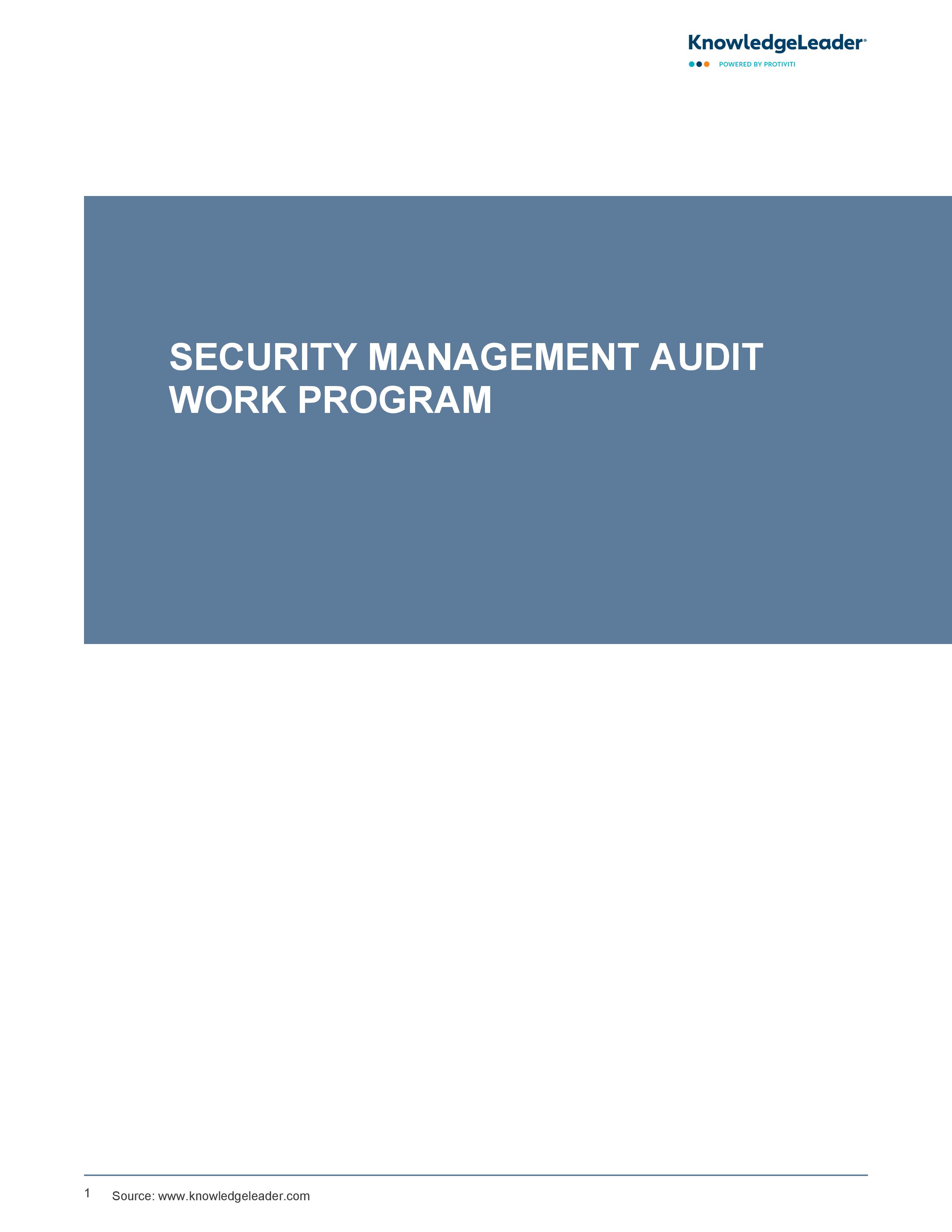Security Management Audit Work Program

Comprehensive Guidelines for Evaluating Information Security Practices
Our Security Management Audit Work Program provides a detailed framework for conducting comprehensive security audits within your organization. It outlines various methodologies to assess the effectiveness of information security measures, identify vulnerabilities, and evaluate risk management strategies across different facets of security management. It includes five sample audit work programs, each focusing on specific areas such as policy review, risk assessment, access controls, logical security and incident response. These samples serve as practical guides, offering step-by-step procedures for ensuring thorough evaluations and recommending necessary improvements. The program emphasizes the importance of aligning security policies with business objectives and regulatory requirements, thereby enhancing the overall security posture of the organization.
These samples are structured to address different critical aspects of security management, ranging from the creation and communication of security policies to the technical details of system access and data protection. It details preliminary steps like scheduling meetings and outlines project execution steps, including control area assessments and test procedures. It discusses evaluating the adequacy of physical and logical access controls, the effectiveness of security administration, and the robustness of incident and breach response protocols. By providing a series of targeted audit programs, this document equips security professionals with the necessary tools to systematically identify potential security issues, assess the effectiveness of existing controls, and implement enhancements to safeguard the organization’s information assets effectively.
Audit steps include:
- Review past reports for outstanding issues or previous problems.
- Determine the existence of new threats and vulnerabilities to the institution’s information security.
- Determine whether physical security for information technology assets is coordinated with other security functions.
- Establish whether the company has standards for depreciable lives and salvage values as well as formal capitalization and depreciation policies.